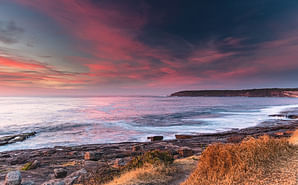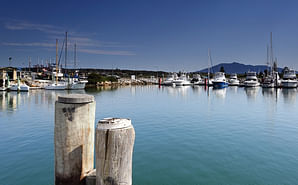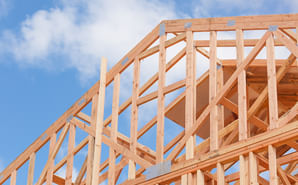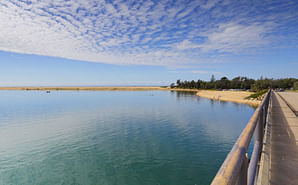Timeline
The Merimbula STP and Ocean Outfall Project started in 2009. This timeline, which we update regularly, highlights some key aspects of the project.

How did we get here?
Over the past 10 years, we have thoroughly investigated various options with specialist environmental consultants AECOM, the NSW EPA and community members. We've considered many factors such as the shape of Merimbula Bay, the need to protect our lakes and vital oyster industry, and our duty to safeguard public health.
-
1987 - 2008
Various studies and investigations on effluent disposal and reuse from Merimbula STP. These reports formed the starting point for the 2009 options study.
-
2009
NSW Environment Protection Authority (EPA) directs Council to start investigating better disposal options. Council appoints specialist consultants AECOM to begin options study.
-
2011
Community Focus Group forms.
-
2013
Community Focus Group recommends to Council that a new Ocean Outfall is the most sustainable and viable option to disperse excess treated wastewater from Merimbula STP.
-
2014
Council adopts an effluent management strategy that includes upgrades to Merimbula STP and construction of an ocean outfall. The EPA amends council's operating licence for the Merimbula STP to include a requirement to construct an ocean outfall and upgrades to the plant.
-
2016
Environmental Planning and Assessment Amendment (Merimbula Sewage Treatment Plant and Ocean Outfall) Order 2016 issued under the Environmental Planning and Assessment Act 1979, section 115U (4).
-
September 2017
First dye dispersion test in Merimbula Bay. Flora and fauna study conducted.
-
November 2017
Concept and environmental assessment via drop-in community information sessions and briefing sessions for key stakeholders.
-
December 2017
Community Working Group (CWG) established and first meeting. Marine hydrographic survey carried out.
-
March 2018
Community Information Sessions at Hylands Corner in Merimbula, Pambula Markets and Merimbula Seaside Markets.
-
May 2018
Second dye dispersion test in Merimbula Bay.
-
October 2018
Heritage and Aboriginal significance investigations conducted.
-
November 2018
Geotechnical investigations conducted.
-
2019
Marine ecology studies ongoing.
-
March & May 2019
Community Information Sessions at Bar Beach, Pambula Markets, Merimbula Seaside Markets. Public tours of the Merimbula Sewage Treatment Plant (25 May).
-
Mid 2019
The community working group together with members from the project team undertook a Multi Criteria Analysis of the outfall and STP upgrade options.
-
September 2019
Council and the community working group resolved on a preferred alignment for the outfall and indicative upgrades for the STP.
-
Late 2019 - June 2021
Further environmental assessments and investigations conducted to inform the Environmental Impact Statement (EIS).
-
June 2021
EIS submitted to the Department of Planning, Industry and the Environment (DPIE).
-
August - September 2021
Public exhibition of the EIS through DPIE (28 days).
-
September - October 2021
Review, consider and address submissions.
-
November - January 2022
State government departmental review.
-
February 2022
Ministerial determination.
-
October 2023
AECOM carried out further near and far field modelling of different depths of outfall pipe. Demonstrated outfall pipe at 20m depth had very low environmental impacts on Merimbula or Pambula estuaries.
-
April 2024
Council report confirmed original EIS of ocean outfall pipe to remain at 30m depth and length 3,500m from STP.






